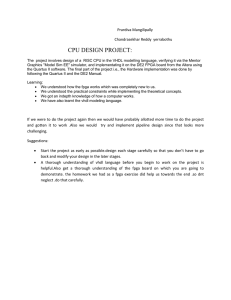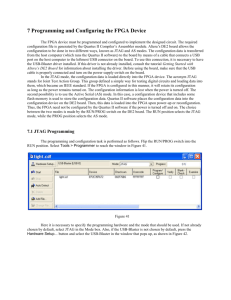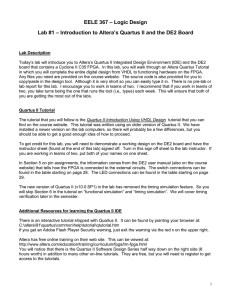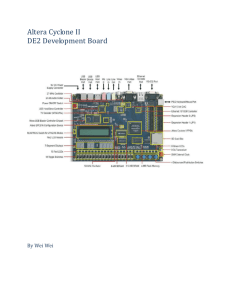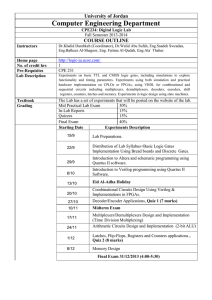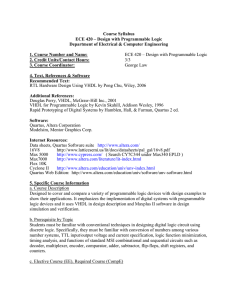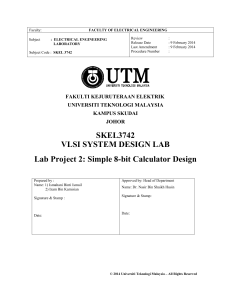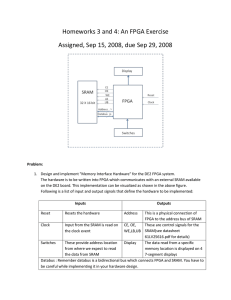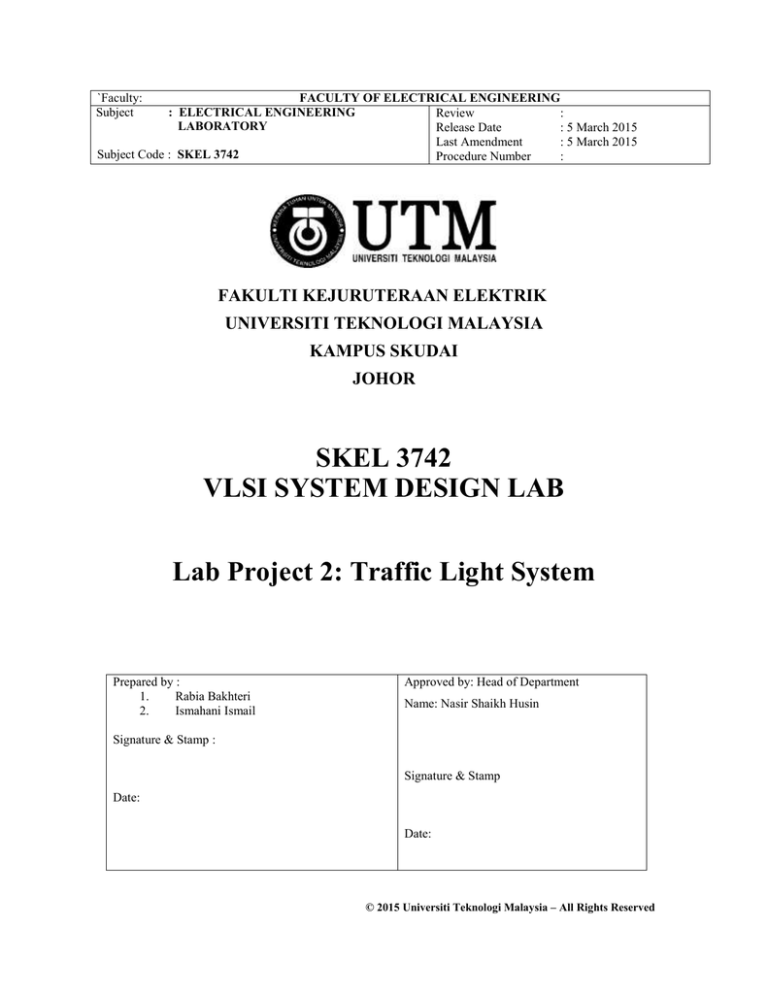
`Faculty:
Subject
FACULTY OF ELECTRICAL ENGINEERING
: ELECTRICAL ENGINEERING
Review
:
LABORATORY
Release Date
: 5 March 2015
Last Amendment
: 5 March 2015
Subject Code : SKEL 3742
Procedure Number
:
FAKULTI KEJURUTERAAN ELEKTRIK
UNIVERSITI TEKNOLOGI MALAYSIA
KAMPUS SKUDAI
JOHOR
SKEL 3742
VLSI SYSTEM DESIGN LAB
Lab Project 2: Traffic Light System
Prepared by :
1.
Rabia Bakhteri
2.
Ismahani Ismail
Approved by: Head of Department
Name: Nasir Shaikh Husin
Signature & Stamp :
Signature & Stamp
Date:
Date:
© 2015 Universiti Teknologi Malaysia – All Rights Reserved
Project Introduction
The traffic light at a junction between a main road and a small road is controlled by two motion
sensors as shown in Figure 1 below. The two main traffic lights, SA and SB take turns to change
to green every 12 seconds once. However, if there is a car detected by motion sensors, M1 or M2,
then after the current main traffic light changes to red, SC or SD are changed to green for 12
seconds followed by the resumed process of change between SA and SB. If both motion sensors
are activated at the same time, SC is given priority to become green for 12 seconds followed by
SD for 12 seconds.
Figure 1: Traffic Light System
The objectives of this project are:
1. To construct truth table based on project specifications and design the traffic light system
using combinational and sequential logic design.
2. To draw the combinational and sequential logic circuit of the traffic light system using
schematic design entry/hardware design language (HDL) coding and verify its function using
Altera Quartus II Tools software.
3. To prototype and demonstrate the design of the system using Altera FPGA DE2 board.
2
Project Task
Design the traffic light system using Quartus II schematic entry/HDL coding. Write a report with
the well-presented design steps, simulation results and FPGA prototyping methodology are
expected to be produced at the end of the project after the third session of the lab.
Some design guidelines:
1.
Design a circuit for the traffic light using multiplexers, counters, adders and similar logic
blocks.
2.
For your design, use appropriate gates, components and mega functions from the Quartus II
system library.
3.
Use a mod-12 counter to do countdown for the traffic light change.
4.
Use registers or flip-flops to for storage.
5.
The motion sensor inputs will eventually be connected to the toggle switches on the DE2
board.
6.
The countdown for the traffic light will eventually be displayed on the 7-segment displays on
the DE2 board.
Identify input and output of your system, encoding method, circuit topology and suitable
algorithm to be used. Design the system using combinational and sequential logic gates and
verify the design using Quartus II CAD Tool. Final task is to prototype and demonstrate your
system using FPGA DE2 board. Refer to Quartus II and FPGA tutorial to help you to implement
this project.
3
Week 1:
Design the traffic light system including a block diagram for the datapath and a state machine
diagram for the control unit. Below is a sample datapath unit for your reference. Use this as an
example to design your datapath.
Figure 2: Up/Down Counter (F. Vahid, Chapter 4, Digital Design, 2006)
Week 2:
Design the datapath and control unit using schematic entry or Verilog HDL. Verify your design
by using simulation waveform to check design correctness.
Week 3:
Implement the completed traffic light on the Altera DE2 FPGA board. Use the toggle switches for
input and 7-segment display as well as LEDs for output.
4

